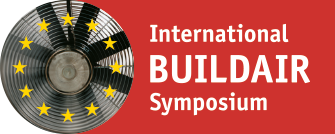Purpose of the work
We investigated whether leak detection methods from the building sector can be customized to find leaks in the paneling of an aircraft's cargo hold. Airtightness values of the cargo area are used as reference to determine how much extinguishing agent has to be carried during the flight.
Method of approach
Our investigation customizes the BlowerDoor test method. The test was conducted in the Fraunhofer flight laboratory which uses an original Airbus A310 to look into research issues. The cargo area of the aircraft was fitted with today’s standard paneling. A slight negative pressure was created using a vacuum system. The cargo area was bathed with cold air and a heater was set up in the same area to create a slight temperature difference. By comparing the thermographic images with and without negative pressure we were able to identify cold air noses and then sealed the leaks.
Content of the contribution
This presentation gives you a brief overview of the project background – the development of an environmentally-friendly cargo fire extinguishing system. I will present the test setup in the cargo area and explain why an airtight cargo area is a design parameter that determines the amount of extinguishing agent to be carried and thus ultimately also determines the system weight. I will then show you how we customized the BlowerDoor method and the differences when searching for leakages in the cargo area. I will then visualize the identified leaks in the cargo area using thermography.
Results and assessment of their significance
By customizing the BlowerDoor method we were able to detect leakages in the cargo area’s paneling. After having sealed those spots, we no longer detected any cold air in that area. In addition, the values measured for the pressure differences are now higher than before and reflect the improved air seal.
Conclusions
The BlowerDoor method was successfully customized to search for leakages in the aircraft cargo area paneling. It is thus a valid tool for quality assurance and leakage detection.
For further information please contact Dr.-Ing. Victor Norrefeldt at: victor.norrefeldt@ibp.fraunhofer.de





